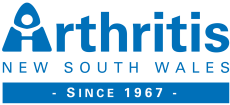Exercise helps to keep bones strong, prevent falls and fractures and helps you recover faster after a fracture. Some types of exercise help more than others.
Exercise builds strong bones in children
Strong bones depend on how well they were made in the first place. Most people’s bones are at their strongest in their 20s. After this, bone density begins to decline. For strong bones, children need enough daily calcium in the diet. Their bodies also need to make enough vitamin D to help them absorb calcium. Being in sunlight for short periods helps our bodies make vitamin D.
Even before puberty, exercise is very important for building strong bones. It is never too early (or too late) to begin making bones as strong as possible. Girls who are the most physically active have bones that are about 40% stronger than girls of the same age who are the least active.
Exercise keeps bones strong in adults
Exercise in adults can help keep bones strong. Bone loss begins gradually in the late thirties. During the middle adult years, exercise is important to keep bones strong, as well as improving muscle strength and heart and lung fitness.
Exercise keeps bones strong in elderly people and helps prevent falls
The main aim of exercise for older people depends on how healthy their bones are. If you haven’t been diagnosed with osteoporosis it’s important to exercise to keep bones and muscles strong. Exercise will also help improve your balance, posture and co-ordination.
Exercise helps posture and balance
People with osteoporosis are more likely to have a bone fracture than people with normal bone strength. It’s often a fall that causes the fracture. Elderly people have a higher risk of a fracture because they tend to fall more often. Every year, about 40% of people over 65 fall at least once. Avoiding falls means fewer fractures, especially hip fractures. Most hip fractures are caused by falls.
Exercise and Falls Prevention
Falls can sometimes be prevented. People with better posture, better balance and stronger muscles are less likely to fall and are therefore less likely to be injured. On the other hand, people who are not very active are more likely to have a hip fracture than those who are more active. There are many causes of a fall, but some major factors, which could put you at higher risk include:
- having had a fall already
- taking many different medications
- having chronic diseases
- having arthritis, especially in the legs
- problems with vision
- having poor balance and poor muscle strength
What are the best exercises for strong bones?
Exercises which mean your body has to carry its own weight (e.g. walking, but not swimming), and which involve running, jumping or skipping, help new bone to grow and prevent bone loss. Walking, jogging, dancing, tennis, volleyball, lifting weights, and netball, are all good.
Tips for a good bone-health exercise program
- to have an effect on bone, exercise needs to be regular and fairly vigorous. Doing a variety of different exercises is best because it exercises bone in different ways. Short, intense bursts of exercise (e.g. 15 minutes lifting weights or very brisk walking) is probably better for bones than a leisurely one hour walk.
- 2 short exercise sessions (20 minutes) separated by 8 hours is better for bone, than one long session
- Start slowly and progress gradually
- Activities that promote muscle strength, balance and co-ordination, help to prevent falls. Pilates, gentle yoga and Tai Chi are all good activities to help prevent falls.
Exercise for managing osteoporosis
If you already have osteoporosis and have had fractures, it’s good to ask a doctor or physiotherapist before starting an exercise program.
- start with a basic strengthening program
- join a falls prevention class
- if you have had a fracture
- – avoid jarring, twisting or jumping movements
– avoid abrupt or sudden high impact movements
– avoid abdominal (stomach) curl ups
– avoid forward bending from the waist
– avoid heavy lifting
Download the information sheet Exercise and osteoporosis
